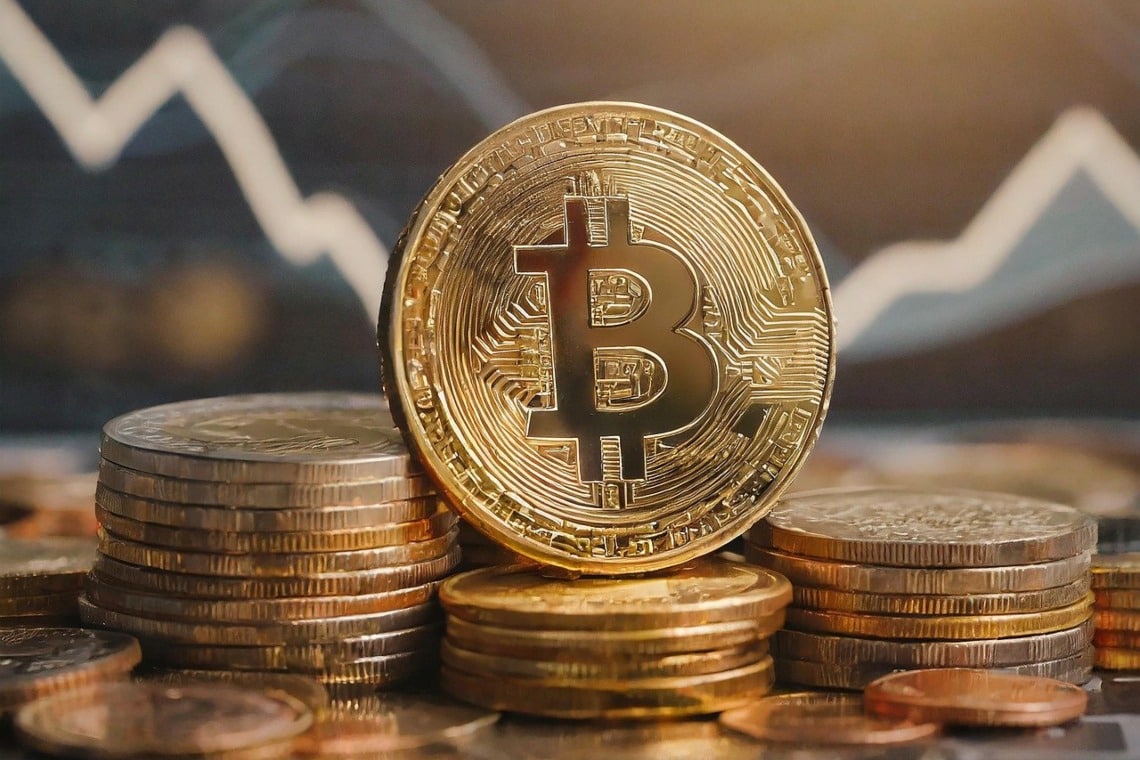In February, the inflation rate in the USA rose to 3.2% from January’s 3.1%: however, the price of Bitcoin did not suffer from this increase.
Indeed yesterday, when the data was released, the price of BTC had only a small fluctuation, going from $72,000 to $71,400, but then immediately recovering to $72,000.
A few hours later, however, there was a brief correction that brought it down to below $69,000, but only to return to $72,000 a few hours later.
Today, however, it set a new all-time high above $73,000.
The problem of inflation rate in the USA: Bitcoin is not affected
The fact is that although inflation in the USA has slightly risen, there are at least two aspects that make this increase not particularly relevant.
The first, trivially, is the really small entity: +0.1% of the annual inflation rate.
In fact, although most forecasts believed that it would be confirmed at 3.1%, someone had already predicted a slight increase to 3.2%. Therefore, the impact of the news on financial markets was minimal.
But there is another aspect that is even more important.
It should be remembered that the Fed’s monetary policies, which for the past two years have been trying to combat inflation, actually focus mainly on core inflation, that is, the inflation rate stripped of changes in food and energy prices.
Well in February 2024 the annual core inflation rate instead decreased, from 3.9% to 3.8%.
Although markets were expecting a decrease of up to 3.7%, it is still only a tenth of a percentage point more.
Moreover, even in the case of the 3.8% core inflation, there was someone who had already hypothesized such a value, so the markets were only slightly surprised.
Looking at other metrics, such as the Dollar Index, it can be seen that the variations generated yesterday by the release of this data were minimal, and as far as Bitcoin is concerned, they were almost irrelevant.
The correction of the BTC price
It should be noted, however, that yesterday, in the hour following the publication of the data on US inflation in February, the Dollar Index slowly rose from 102.8 points to 103.1 points, and although this increase was very limited, shortly after a small correction of Bitcoin began.
Seven hours later the Dollar Index had returned to 102.9 points, and the price of Bitcoin, already back above $71,000, then also recovered $72,000.
It was therefore a rapid and very short-lived movement, so much so that it completely exhausted during the night.
It is worth noting that the drop below $69,000 stopped well above the price level of March 10, which had been holding for two days.
Actually, to be precise, it didn’t even drop to the levels of March 11th before starting the climb above $72,000, which at that time was the new all-time high.
It was most likely a correction mainly due to profit-taking by those who were in profit and did not want to miss the opportunity to monetize their gains. Once these profit-taking activities were completed, the price of BTC was able to resume its upward trend.
Liquidity
The markets have not changed their forecasts regarding the Fed’s monetary policies.
They continue to consider a change in interest rates on March 20 practically impossible, and a cut in May extremely unlikely.
However, they remain convinced that the Fed may make a first small cut in June, despite slightly rising inflation, and core inflation falling lower than expected.
Usually the price of Bitcoin reacts directly to changes in liquidity in the markets, although in recent days this correlation seems to have temporarily dissolved.
Indeed, although liquidity in financial markets has been on the rise since January 2023, this upward trend seems to have stalled in 2024. On the other hand, the price of Bitcoin has continued its bull run even in 2024, with a real surge between February and March.
After all, the current price surge of Bitcoin is actually an “internal” bull run, not due to external factors but to its own market.
Specifically, this is due to a change in the basic structure of its market, thanks to the ETFs that are attracting a lot of fresh capital from investors who were previously completely absent from its market.
However, it is important to keep in mind that this decoupling could soon come to an end, and the arrival of the halving, around mid-April, could be the right time for a real correction.
